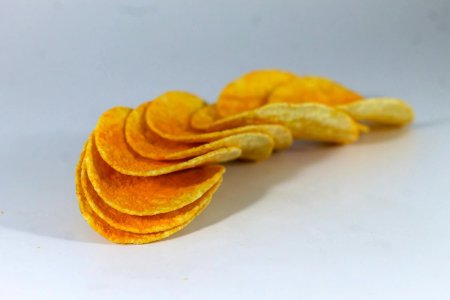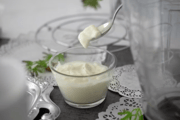Are microplastics in junk food quietly affecting your brain? Here’s what the research says—and what you can do about it
By
Veronica E.
- Replies 0
If you’ve ever relied on a frozen meal, a bag of chips, or a quick microwavable dinner, you’re in good company.
For many of us, convenience foods have become a part of everyday life.
But recent research is raising new concerns about what's in these ultra-processed foods—and how it might affect not just our physical health, but our brains, too.
Scientists are now connecting the dots between microplastics, ultra-processed foods (UPFs), and mental health, and the findings are giving many experts pause.
Here’s what you need to know, and how to make safer choices—without overhauling your entire pantry.

Microplastics are tiny plastic particles—usually smaller than 5 millimeters—that come from the breakdown of larger plastic items or are intentionally added to some products.
Over time, they’ve made their way into our oceans, water supply, soil, and increasingly, our food.
Now, new research published in Brain Medicine suggests that ultra-processed foods—like packaged snacks, processed meats, sugary drinks, and frozen dinners—contain much higher levels of microplastics than whole foods.
In one case, researchers found that chicken nuggets contained 30 times more microplastics per gram than a regular chicken breast.
The likely sources? Plastic packaging, industrial food processing equipment, and chemical additives used in these foods.
It’s not just about what we’re eating—it’s about where those microplastics are going.
Scientists have now found evidence that microplastics can cross the blood-brain barrier—the protective shield that normally keeps harmful substances out of our brains—and accumulate in “alarming” amounts.
Researchers say these particles may contribute to:
In other words, there may be a connection between eating a diet high in UPFs and increased risk of depression, anxiety, sleep problems, and cognitive decline—and microplastics could be playing a bigger role than we thought.
As we age, our bodies become more vulnerable to environmental toxins.
The blood-brain barrier may weaken, and we may become more susceptible to the kind of stress and inflammation that researchers are linking to microplastic exposure.
Early studies are even looking at possible connections between microplastics and neurodegenerative diseases like Alzheimer’s and Parkinson’s.
While more research is needed, many experts agree: it’s worth being cautious now to protect brain health in the years ahead.
The good news? You don’t need to panic—or throw away everything in your kitchen.
Here are a few simple, research-backed steps you can take:
1. Avoid microwaving food in plastic
Heating food in plastic containers can release microplastics directly into your meals. Use glass or ceramic dishes instead.
2. Switch to safer storage containers
Opt for glass, stainless steel, or silicone for food prep and storage. They’re durable and don’t shed plastic particles.
3. Cut back on ultra-processed foods
Try to choose whole, less-processed foods when you can—like fresh vegetables, fruits, grains, and lean proteins. Not only are they better for your overall health, but they’re also less likely to contain microplastics.
4. Pay attention to packaging
Minimize foods that come in heavy plastic wrapping. When possible, shop in bulk or use your own reusable containers.
5. Stay informed—and speak up
Support efforts that call for safer food standards, reduced plastic use, and better labeling. Consumer awareness drives change.
It’s easy to feel overwhelmed by headlines—but the message here isn’t fear.
It’s empowerment.
By making small adjustments to how we shop, store, and eat, we can protect our bodies and minds—now and for years to come.
After all, we’ve made it through decades of changing trends and shifting advice.
With a little awareness and a few smart choices, we can continue to take care of ourselves in a world that isn’t always simple!
Read next: The surprising cause behind the mysterious surge in cancer cases—revealed by scientists!

Have you experienced changes in sleep, mood, or focus and wondered if your diet could be playing a role? Are you already taking steps to reduce plastic use in your kitchen? We’d love to hear from you. Share your thoughts, questions, or tips in the comments. The GrayVine is a space for honest conversation and mutual support.
For many of us, convenience foods have become a part of everyday life.
But recent research is raising new concerns about what's in these ultra-processed foods—and how it might affect not just our physical health, but our brains, too.
Scientists are now connecting the dots between microplastics, ultra-processed foods (UPFs), and mental health, and the findings are giving many experts pause.
Here’s what you need to know, and how to make safer choices—without overhauling your entire pantry.

Researchers are raising concerns about microplastics in everyday foods—and how these invisible particles could be impacting brain health over time. Image Source: Pexels / Terrance Barksdale.
What are microplastics, and how are they getting into your food?
Microplastics are tiny plastic particles—usually smaller than 5 millimeters—that come from the breakdown of larger plastic items or are intentionally added to some products.
Over time, they’ve made their way into our oceans, water supply, soil, and increasingly, our food.
Now, new research published in Brain Medicine suggests that ultra-processed foods—like packaged snacks, processed meats, sugary drinks, and frozen dinners—contain much higher levels of microplastics than whole foods.
In one case, researchers found that chicken nuggets contained 30 times more microplastics per gram than a regular chicken breast.
The likely sources? Plastic packaging, industrial food processing equipment, and chemical additives used in these foods.
Also read: What’s touching your food? A recent lawsuit raises concerns about microplastics
From your plate to your brain: why this matters
It’s not just about what we’re eating—it’s about where those microplastics are going.
Scientists have now found evidence that microplastics can cross the blood-brain barrier—the protective shield that normally keeps harmful substances out of our brains—and accumulate in “alarming” amounts.
Researchers say these particles may contribute to:
- Inflammation in the brain
- Increased oxidative stress (damage at the cellular level)
- Disruptions in neurotransmitters that affect mood and memory
- Changes to how genes are expressed in brain cells
In other words, there may be a connection between eating a diet high in UPFs and increased risk of depression, anxiety, sleep problems, and cognitive decline—and microplastics could be playing a bigger role than we thought.
Also read: Save your health from escalating microplastics danger with these affordable superfoods!
Why older adults should pay special attention
As we age, our bodies become more vulnerable to environmental toxins.
The blood-brain barrier may weaken, and we may become more susceptible to the kind of stress and inflammation that researchers are linking to microplastic exposure.
Early studies are even looking at possible connections between microplastics and neurodegenerative diseases like Alzheimer’s and Parkinson’s.
While more research is needed, many experts agree: it’s worth being cautious now to protect brain health in the years ahead.
Also read: Are microplastics hiding in your favorite fast food? Find out!
What you can do to reduce your exposure
The good news? You don’t need to panic—or throw away everything in your kitchen.
Here are a few simple, research-backed steps you can take:
1. Avoid microwaving food in plastic
Heating food in plastic containers can release microplastics directly into your meals. Use glass or ceramic dishes instead.
2. Switch to safer storage containers
Opt for glass, stainless steel, or silicone for food prep and storage. They’re durable and don’t shed plastic particles.
3. Cut back on ultra-processed foods
Try to choose whole, less-processed foods when you can—like fresh vegetables, fruits, grains, and lean proteins. Not only are they better for your overall health, but they’re also less likely to contain microplastics.
4. Pay attention to packaging
Minimize foods that come in heavy plastic wrapping. When possible, shop in bulk or use your own reusable containers.
5. Stay informed—and speak up
Support efforts that call for safer food standards, reduced plastic use, and better labeling. Consumer awareness drives change.
It’s easy to feel overwhelmed by headlines—but the message here isn’t fear.
It’s empowerment.
By making small adjustments to how we shop, store, and eat, we can protect our bodies and minds—now and for years to come.
After all, we’ve made it through decades of changing trends and shifting advice.
With a little awareness and a few smart choices, we can continue to take care of ourselves in a world that isn’t always simple!
Read next: The surprising cause behind the mysterious surge in cancer cases—revealed by scientists!
Key Takeaways
- New research suggests a possible link between microplastics found in ultra-processed foods and increased risk of mental health issues like depression and anxiety.
- Foods like chips, processed meats, and frozen meals contain significantly more microplastics than whole foods due to packaging and industrial processing.
- Microplastics have been shown to cross the blood-brain barrier and accumulate in brain tissue, potentially affecting brain health.
- Experts recommend avoiding microwaving food in plastic, reducing ultra-processed food intake, and switching to safer food storage options.
Have you experienced changes in sleep, mood, or focus and wondered if your diet could be playing a role? Are you already taking steps to reduce plastic use in your kitchen? We’d love to hear from you. Share your thoughts, questions, or tips in the comments. The GrayVine is a space for honest conversation and mutual support.






